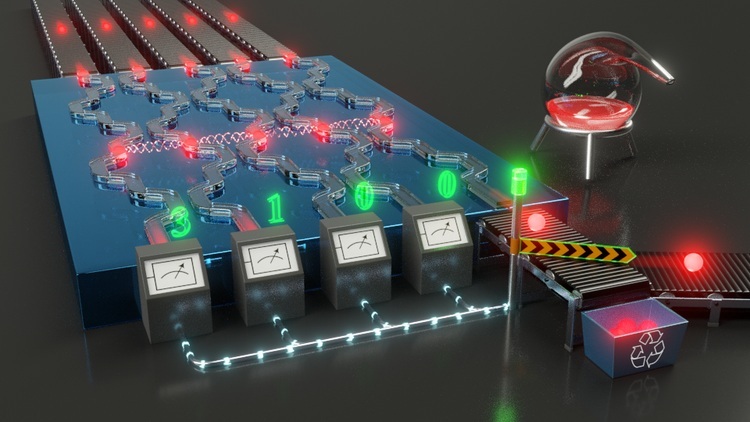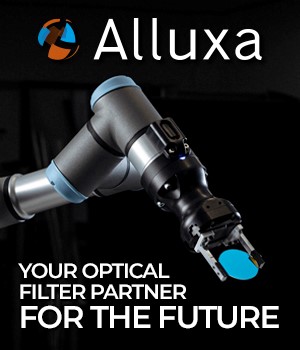3 April 2025
An invention from Twente improves the quality of light particles (photons) to such an extent that building quantum computers based on light becomes cheaper and more practical. The researchers published their research in the scientific journal Physical Review Applied. "This technology is an essential part of any future photonic quantum computer."
Quantum computers are at a tipping point: tech giants and governments are investing billions, but there are two fundamental obstacles: the quantity of qubits and the quality of these qubits. UT researchers have invented a component for a photonic quantum computer that exchanges quantity for quality, and have shown that this exchange yields more computing power. "Our discovery brings a future with powerful quantum computers a lot closer. That means improved medicines, new materials and safer communications. But also applications that we cannot yet imagine today," says lead researcher Jelmer Renema.
Perfect photons for error-free quantum computers
The researchers from Twente developed a method to correct these errors at an early stage and improve the quality of photons. "For a photonic quantum computer, you need extremely high-quality photons. Our technique ensures that only the best photons remain, which is crucial for reliable calculations," says Renema.
Because quantum computers are extremely sensitive to errors, previous methods required hundreds of physical photons to make a single reliable qubit. The Twente researchers' method can replace part of the required error correction, requiring far fewer photons. This ultimately makes quantum computers cheaper and more accessible.
Filtering without knowing the problem
Whereas previous methods focused on error correction afterwards, the UT researchers tackled the problem at the source. They designed a new component that can conveniently distil a single high-quality photon from a brew of imperfect photons. To do this, they devised an optical circuit consisting of programmable light guides and detectors. By exploiting the quantum properties of light, they created a 'Schrödinger's cat'-like state in which photons are more likely to assume 'good' rather than 'bad' properties. As in Schrödinger's famous thought experiment, measurement ultimately determines whether a photon has retained the desired properties.
Instead of accepting imperfect photons and correcting them later, the new method directly filters perfect photons. Although filtering each perfect photon requires sacrificing several imperfect photons, this reduces the total number of photons needed. This saves an enormous amount of computing power and makes quantum computers cheaper and more efficient. By using an optical circuit with programmable switches, the researchers can filter out bad photons without having to know exactly what causes the error. "Normally, you have to decide in advance what you are filtering, such as a colour filter that only lets red light through. We can now filter without knowing in advance what the problem is," says PhD student Frank Somhorst.
In every future quantum computer
If photonic quantum computers are ever deployed on a large scale, the researchers say this Twente invention will be a fundamental part of it. As with classical computers, the same applies to quantum computers: bad input leads to bad output. By tackling the noise considerably at the front end of the system, there is less need for correction afterwards. "Any practical photonic quantum computer will need this technique to perform error-free calculations," says Renema.
Twente has a strong position in photonics and quantum technology. Several UT researchers have been researching steering photons with interference for years, and that gives us a unique edge. "Because of that lead, we can now focus on large-scale universal quantum computing and, in my opinion, this is exactly why this had to be discovered at UT," concludes Renema.
More information
The research was made possible in part by the Vidiproject 'At the Quantum Edge' and the National Growth Fund programme PhotonDelta. The University of Twente has applied for a patent on the technology. First author Frank Somhorst is a PhD student in the Adaptive Quantum Optics research group (AQO; S&T/MESA+ Faculty).
Somhorst published this research together with Kite Sauër, Stefan van den Hoven and Dr Jelmer Renema (all AQO) in the scientific journal Physical Review Applied. Their publication, entitled ‘Photon distillation schemes with reduced resource costs based on multiphoton Fourier interference’ was also singled out by the journal as an 'Editors' suggestion'. Similar research was published at the same time by the NASA Ames laboratory





